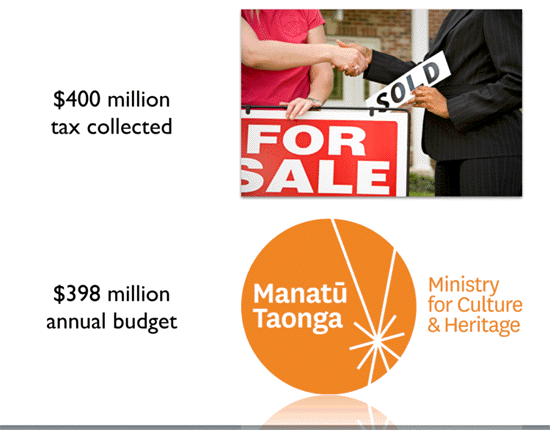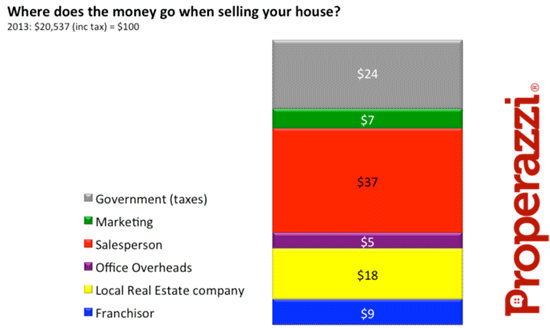
As I have expounded before, when it comes to the real estate industry the subject of money is little discussed and little understood.
I have sought to answer the often asked questions as to what are the real estate commissions charged by the large companies? what does a real estate agent earn? and also just how efficient is the real estate industry?
To add to this list I have for quite sometime been meaning to do an analysis to see exactly where that c.$18,000 of commission fees goes when the property transaction goes unconditional and the selling agent collects the deposit from the buyer from which they are entitled to deduct their fees.
In the calendar year 2013 the 80,119 property sales reported through the Real Estate Institute’s members generated a total sales value of $40 billion and a commission fee of $1.4 billion in residential real estate alone.
The question I think should be asked and investigated as to the flow of this revenue stream as to who are the beneficiaries.
I make the statement of beneficiaries not as a judgement in any way on any party to the real estate service, I merely believe it is insightful to see the flow of money.
Firstly the $1.4 billion in commission fees actually scales up to $1.6 billion when the GST is added, meaning that the average amount property sellers paid to real estate agents was just over $20,500.
As far as following the money the first beneficiary is the government - a tidy $200 million a year of GST on the transaction invoice comes right off the top the government.
In fact when you add up the total tax take including GST plus notional PAYE and company tax I would conservatively say that the government coffers benefit to the tune of $400 million a year from the operation of the real estate industry.
This total conveniently matches the total budget for the Ministry for Culture & Heritage with a 2013 budget of $398 million - seems somewhat fitting that the real estate industry effectively underwrites Arts & Music, Broadcasting & Films, Sport & Recreation and Heritage.

This significant take by the government however only represents just under a quarter of every dollar that sellers pay to real estate companies, the balance - 76% or in total $1.2 billion is distributed as represented in the chart below.

The largest chunk - a total of $610 million representing $37 in every $100 paid by sellers goes to the people who provide the services to the sellers of property - the agents or more appropriately titled licensed salespeople.
There are around 10,000 of them in residential sales. So the reality is that agents see only just over a third of the total money paid by the seller.
Somewhat surprisingly only $7 of every $100 that vendors pays in fees goes to the marketing of their property (or in fact marketing in general as this total of just over $100 million includes the real estate companies and agents own brand marketing) - given the desire by sellers to see the property sold which as a natural precursor requires a marketing campaign, it may comes as a surprise just how little of their money is spent on marketing.
A large portion, $27 in every $100 paid by property sellers goes to the business owners who run the real estate industry, not for those flash high street offices as this cost is separately accounted for as $5 in every $100; but to the structures and operations that support the individual real estate agents whilst they are out and about prospecting for business and negotiating the sale.
---------------------------------------------------------------------------------------
Notes: These calculations are based on the starting point of the sales data from the Real Estate Institute, to this I have added published data from some individual real estate companies (Barfoot & Thompson and Ray White) together with market share analysis of the market to create a model of the sales value by company. I have then factored in the average commission split between salespeople and offices as well as commission rates recognising regional variances and factors for median price. Lastly I have estimated the franchise fees charged by the groups based on market intelligence I have acquired over the many years I have worked in the industry. I accept that there is a lot of estimation in these calculations but as an indication I believe them to be robust enough to publish.
---------------------------------------------------------------------------------------
The above article was written by Alistair Helm, and is republished with his approval. The article was originally published on Properazzi here

We welcome your comments below. If you are not already registered, please register to comment.
Remember we welcome robust, respectful and insightful debate. We don't welcome abusive or defamatory comments and will de-register those repeatedly making such comments. Our current comment policy is here.